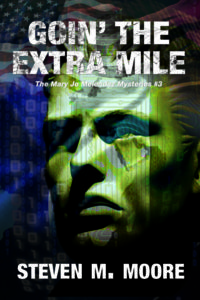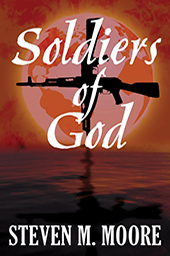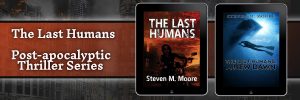Can today’s authors compete with visual media?
[Note from Steve: Double feature today! This article is followed by a book review.]
Movies, streaming videos, computer games—these are three audiovisual media, emphasis on the visual, to which people are addicted. Authors are told to show not tell (more terrible advice from writing gurus!), but “showing” isn’t really possible in novels, is it? Their media reduces to words on the written page; there’s nothing audiovisual about that.

But avid readers know they can create their own visuals from those words alone if an author gives them a minimalist nudge. That’s all it takes to draw a reader into the creative process. People can choose the more passive visual entertainment and eschew participation in the creative process, but that choice is a sad one. They will never be able to enjoy that experience of using an author’s words to create their own personal images of what’s going on. Every reader’s images will be different. True, their creation is guided by the words, but that’s all the author should be: A guide.
Modesty aside, I’ll choose two examples from my own oeuvre to illustrate the point.
At the beginning of Goin’ the Extra Mile, the reader is right there with Mary Jo Melendez (written in first person, by the way) as she hops atop a speeding car to stop the kidnapping of her two adopted children. That’s action-in-words designed to hook readers, telling all readers that the novel is going to be a thrill ride.

The second example shows the advantage of words over settings. While you might see the approach to Bogotá, Colombia from the air in streaming video or a movie, brought to you at high cost (the film company will want to recover the millions spent in production costs), you can enjoy this experience in Soldiers of God for less than the cost of a MacDonald’s meal. And I’d never expect that view in Hollywood schlock because they paint Colombia as a drug-infested land of terrorists, which it isn’t, of course. Lots of good people live there, and it’s a beautiful land, whether portrayed in visuals or words, but the latter must be done properly.
So the answer to the title’s question is simple: Yes! Readers know that answer well. After all, the best movie scripts come from novels. Writers of original screenplays rarely have the patience to paint pictures with words because they’re already seeing the cameras rolling.
True, some authors can overdo it, which is why I emphasize minimalist writing. An author must provide the words that lead readers to create their own images, but that leading must be just enough that readers don’t feel constrained by the words. That’s where the art of writing lies.
***
Comments are always welcome.

“The Last Humans” series. I wrote the first novel in this series, The Last Humans, before the real Covid pandemic. The plague here is bioengineered by an American enemy and is delivered to the West Coast of the US via missile. But we all know from the experiences with those California wildfires that small particles, here the virus, can be carried across the US and to the rest of the world by prevailing winds. Penny Castro, forensic diver for the LA County Sheriff’s department, dives to recover a corpse and emerges to find apocalyptic desolation. The first novel is her story of survival. The second, The Last Humans: A New Dawn, is the story of a US-sponsored revenge mission that goes terribly wrong for Penny. (Fair warning: The idiotic Amazon bots—or the idiots who program them?—confused these two novels, so I’d recommend buying the two books elsewhere. Barnes & Noble, for example, where the links take you, kept them straight. The first novel was a bestseller from Black Opal Books at B&N for a bit, in fact.)
Around the world and to the stars! In libris libertas!
